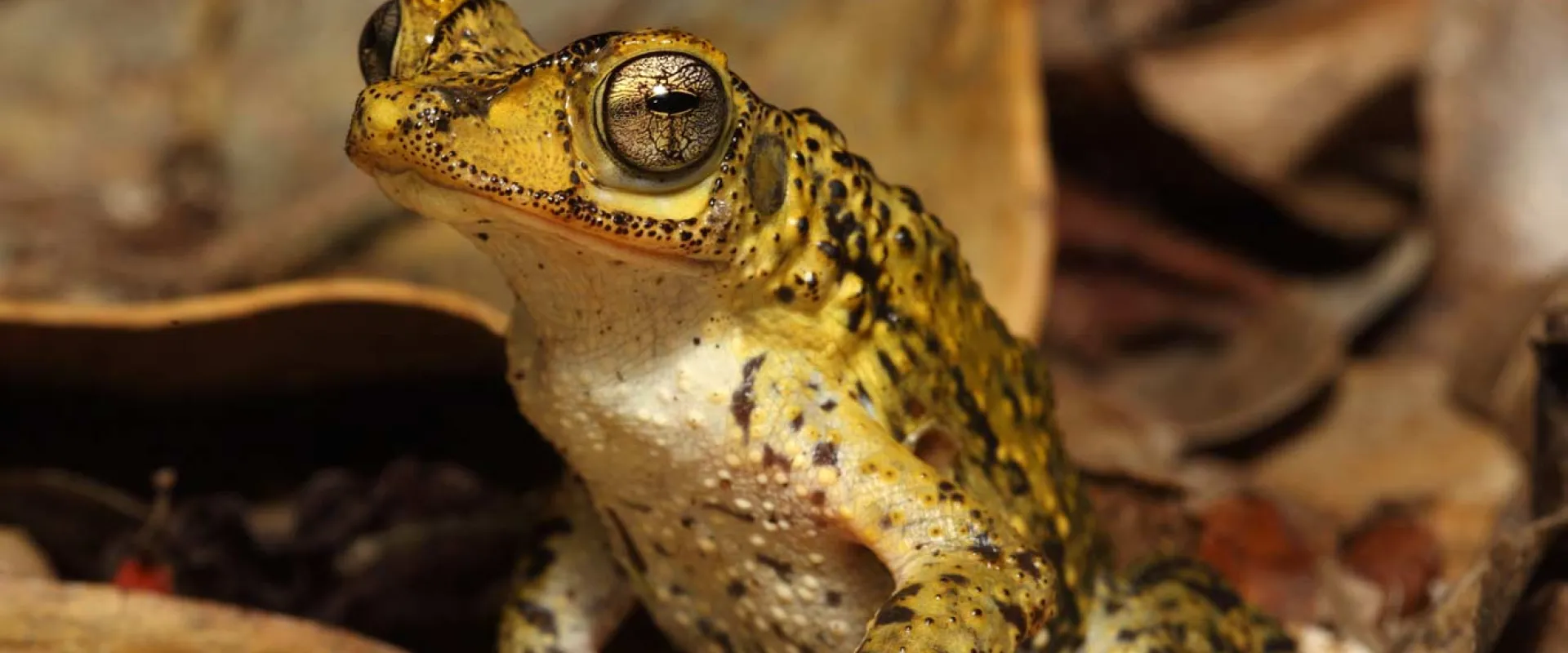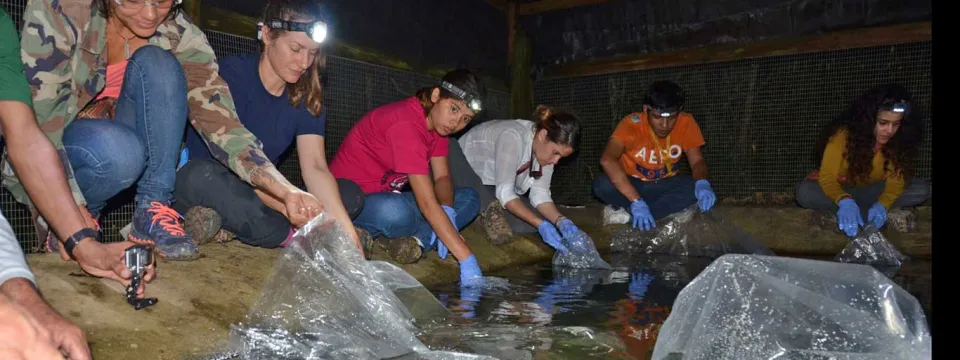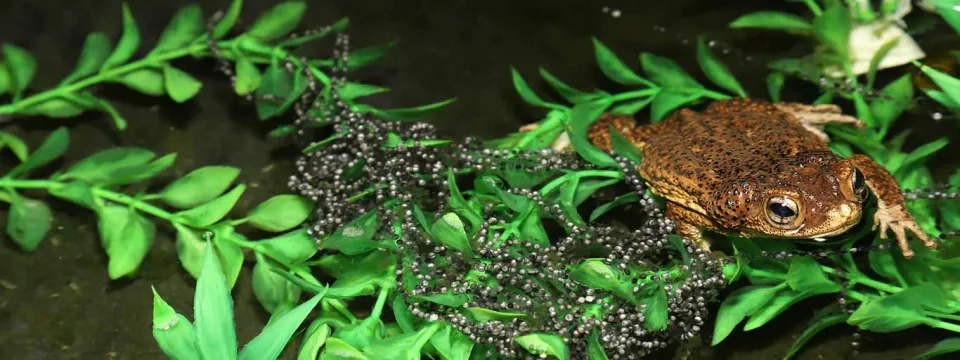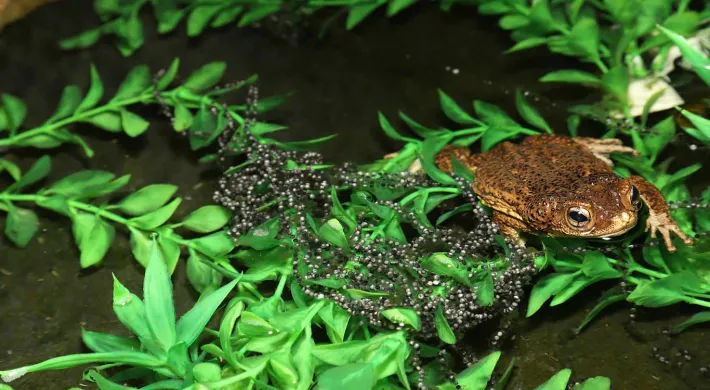Dustin Smith, Curator of Herpetology for the North Carolina Zoo
Imagine an animal that was thought to be extinct for most of its existence. Being seen for the first time and described to science in the 1860s, followed by an almost complete disappearance for close to 100 years.
During that time, only a few individuals were captured by locals, none by scientists.This is the story of “Sapo Concho Puertorriqueno”, also known as the Puerto Rican crested toad. It is the only native toad to Puerto Rico, but often overshadowed by its more common and much louder cousin, the “coqui” and the invasive Cane/Marine toad. Not only is the Puerto Rican crested toad incredibly hard to find, it’s critically endangered (one step before extinct in the wild). I’ve been lucky enough to be involved with its conservation efforts for more than a decade…but there’s still a lot of work to do.
I wear numerous hats in this program, which has many amazing partners. One of those roles I have is called the studbook keeper. A studbook keeper keeps track of each individual in the population of more than 1,400 living toads. Within the studbook is where each toad has an individual identification number (studbook number) and record. This record stores a lot of information, from the age and sex to information about the genetics of each toad. This includes the 50 toads we have at our Zoo, but also toad populations at the other 30 Association of Zoos and Aquariums (AZA) in North America.
These are extremely important as they are the breeding population to produce offspring for release in Puerto Rico. Here at the North Carolina Zoo, we are one of a handful of AZA zoos and aquariums who also breed this species and release tadpoles (headstarting) annually.This is one of the most rewarding parts of my job. Not only do we get to help save the species by releasing thousands of tadpoles every year, but I also get to help with some of the releases.
North Carolina Zoo Curator Dustin Smith with Puerto Rican crested toad, only toad species native to Puerto Rico.
Another responsibility of mine is to conduct toad surveys and meet with our partners in Puerto Rico on an annual basis. This consists of nighttime surveys for toads, using bright headlamps or flashlights, we visit the areas where toads are known to occur and areas which we’ve released them. If we are lucky enough to find a toad, they are weighed, measured, and marked with a very small PIT (Passive Integrated Transponder) tag – similar to the one you may have in your dog or cat. After that, they are released in the same spot in which they were captured. This research informs us as to the status of each population and the next steps we should take. It's an evolving process. There is a lot of effort that goes into saving a species – it's not as easy as just releasing the tadpoles every year. We must ensure the habitat is healthy, populations are growing, and that we monitor threats to the species and the habitat to take appropriate actions. These annual meetings help determine action steps we will take for the upcoming year(s).
Below: a tadpole release in Puerto Rico. The success of the Puerto Rican crested toad programs involves many partner organizations
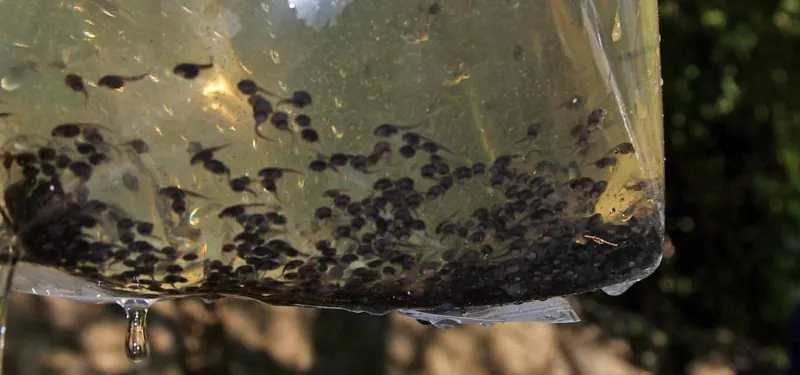
Left: tadpoles ready for release in a process called headstarting
So far, our efforts have been successful, but we are not finished yet. These releases have created new populations, in ponds which were designed and created by all of our partners. If we continue to take these steps towards creating new, self-sustaining populations, we hope that the species can be dow nlisted (i.e., considered less threatened). Our efforts will never stop, even if we consider it “recovered.” We will always need to monitor wild populations to ensure they are safe.
This conservation effort is the longest headstarting effort for any species of amphibians, thanks to the dedication of those involved.There have been many accomplishments over the years due to our great partnerships with AZA zoos and aquariums, the United States Fish and Wildlife Service, the Puerto Rican Department of Natural Resources, and numerous partners and organizations in Puerto Rico. No one individual or organization can save a species, it takes successful partnerships and collaboration. We are lucky to be part of such a collaboration, which is dedicated to saving the Puerto Rican crested toad!
